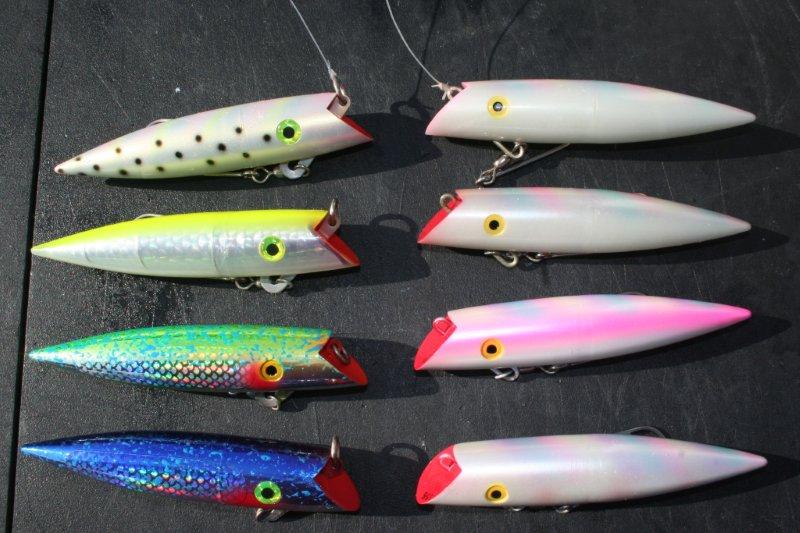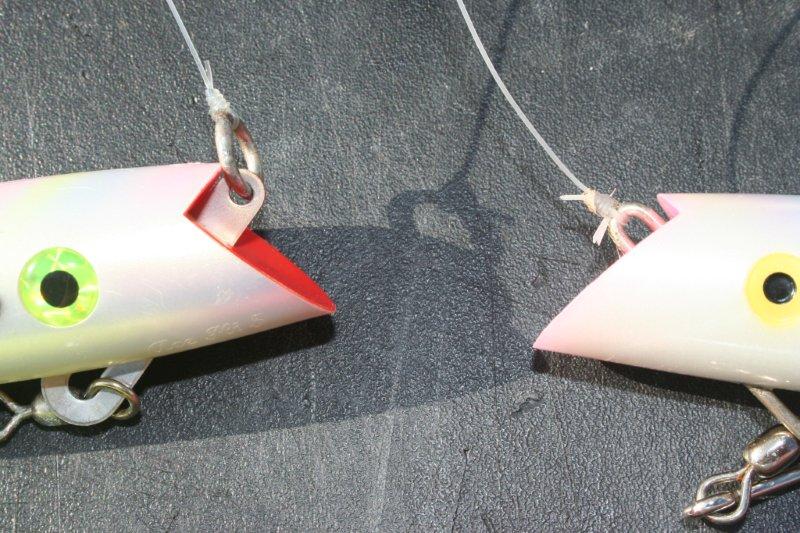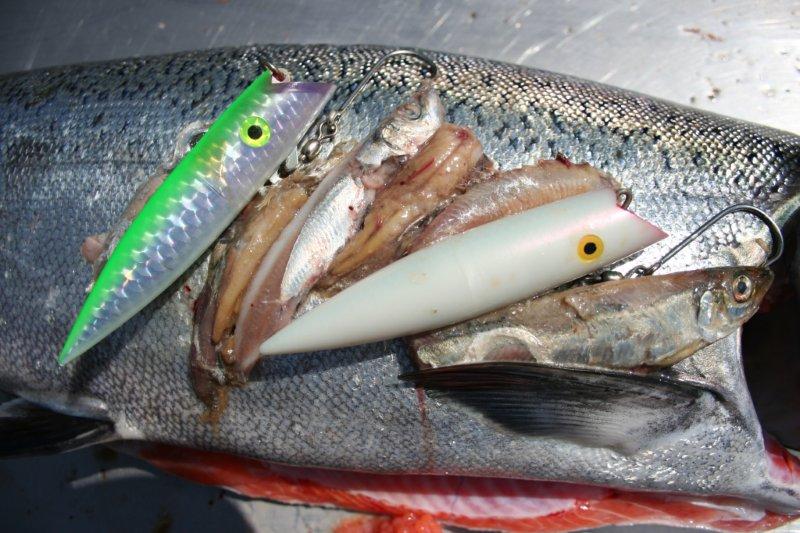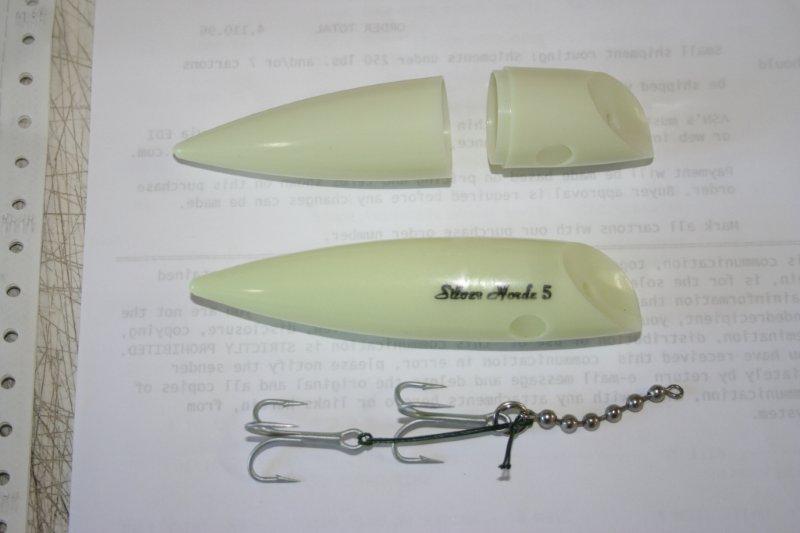Plug Primer! 5
Ok, so maybe it's a little late in chinook season for an in-depth plug drill but it's only early August and there are still kings to be caught so… Let's get pluggin'!
When we talk about salmon trolling plugs off of the Cannon Downriggers we need to draw some distinctions between flasher gear and the plug.
In general, the plug is fished by itself, 40 or 50 feet behind the release, tied directly to your mainline (without a swivel as plugs do not spin).
In contrast, A flasher is fished with a spoon, squid, or fly, 10 to 20 feet behind the release and a bead chain or ball bearing snap swivel is a must.
Salmon plugs are buoyant and they have the ability to dive. As your trolling path turns, speed over ground decreases and the plug rises in the water column. When you straighten out your course, trolling speed increases and the plug dives deeper. This vertical component to the trolling plug is an under-rated aspect to the plug that has the ability to provoke a strike from a finicky chinook!
To get the lowdown on plugs I went directly to the source, namely Silver Horde Inc. in Lynnwood, Washington (Silverhorde.com) Kelly Morrison is a second generation salmon lure manufacturer and some of his innovations are catching salmon this season from California north to Alaska and east to the Great Lakes.
The slip harness plug is two pieces and the way the halves come together often determines how the plug fishes.
To fish the slip harness plug legally in Washington waters you must remove the treble hooks and replace with one or two single hooks. In this case we have a single siwash replacement hook. Note the addition of a barrel swivel and the use of a four-bead chain in the lower siwash harness. The barrel swivel easily accomodates an open-eye siwash and the four bead chain fits neatly and completely inside the plug, enhancing it's action!

The Silver Horde "Ace Hi" Plug has a fixed keyway and has a more erratic, diving action than its concave face slip harness plug counterpart.
These plugs await final inspection and rigging prior to packaging.

Silver Horde Ace Hi 5" plugs on the left and 5" Canadian Tomic plugs on the right. Note the solid keyway on the Silver Hordes that grabs more water than the wire loop of the Tomic.

Tie directly to the welded eye of the Ace Hi and directly to the wire loop of the Tomic. No snap swivels…Please!!!

Five inch plugs are great imitations of five inch herring and this chinook couldn't tell the difference!

I know several fine salmon anglers who always have a plug fishing, winter or summer. Once the coho start to show I will leave the plugs in the box for a while but until then… Plug baby PLUG!




I fish plugs 40 to 50 feet behind the release to let them do their "thing". As you can see from their construction, they're buoyant and they can dive. When you turn they rise in the water column. When you straighten out your speed increases and they dive down. This verticle component of the plugs action is often what it takes to provoke a strike from a finicky chinook!
Dang...me thinks those plugs would be hammer time up here brother. Why fish them so far back from the clip?
And a great show it was Tom, learned alot about plug fishing!
All good things to those who listen to the radio show Dave....;)
But Tom you forgot to tell us how to tune them correctly, how fast they should be pulled, how deep you fish them and when and what are the best scents to use???